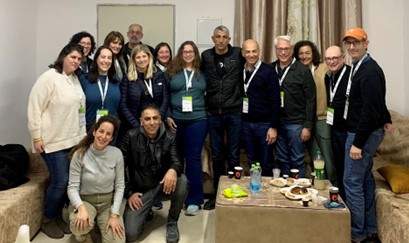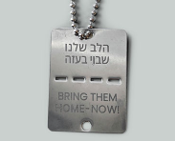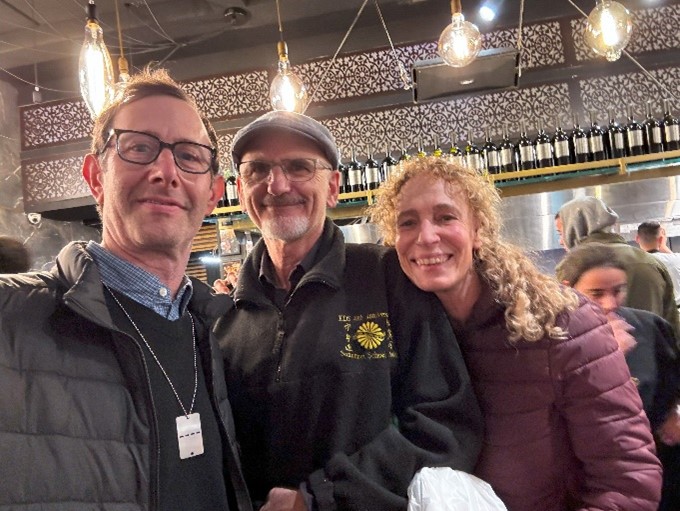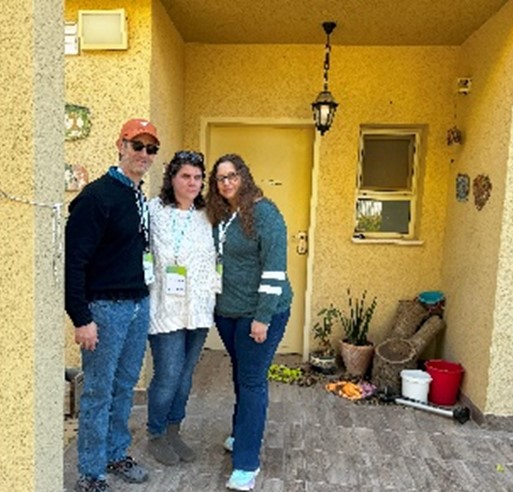I had the privilege of traveling to Israel in January on a solidarity mission with Temple Emanu-El in Dallas and Greene Family Camp. We were on the ground only 78 hours; the trip was intense and powerful, and I came back with a confusing mix of emotions: shocked, disturbed, and angry on one hand, yet at the same time inspired and awestruck. I’ve been home now a little over a month and I’ve had time to reflect, which is why I want to share my thoughts in this blog post. For those of you who follow me on social media, this is an expansion of what I posted shortly after my trip (Instagram).
I was shocked at what we saw at Kibbutz Nir Oz and Kibbutz Nir Yitzhak. Death and destruction brought about by pure evil.

I was disturbed by the depravity of Hamas terrorists spray painting their names on the remains of buildings they torched at Kibbutz Nir Oz to brag about what they did. These kibbutzim are sooo close to Gaza. We looked across the fields into Gaza from Nir Oz, a mere 1.5 miles away. It was unfathomable that their neighbors could do something like this.
I am angry by the fact that the US media isn’t providing the full story. It is okay to feel the pain of what is happening to the children in Gaza. There is no question the citizens of Gaza are paying a terrible price for what Hamas started. It is only in recent days that we are getting some coverage of how entrenched Hamas is within UNRWA, which is supposed to be helping the population in Gaza but can’t because of the corruption thrust upon it by Hamas. But while acknowledging what is happening in Gaza, don’t forget and downplay the atrocities that occurred on October 7 and the barbaric treatment of the hostages that is still occurring. One of the negotiating “wins” a few weeks ago was the shipment of medicine to the hostages (along with general medical supplies for the Gaza civilians). Unfortunately, there’s no proof and no reason to believe that any of the hostages have received any of this much-needed medical help.
I am angry that the Israeli government and IDF broke the social contract to keep its citizens safe. We learned that each Kibbutz has a security detail that is set up to provide basic protection for a few hours at most. On October 7, in some places, it took the IDF more than 10-12 hours to arrive and by then it was far too late.
I was inspired by the heroism that occurred on that day to fill the gaps left by the IDF, like the story of Ismail Alkrenawi and his family from the Bedouin town of Rahat who tirelessly rescued dozens of concertgoers running for their lives from the terrorists. Ismail invited us into his home to share his story along with a traditional Bedouin arrangement of snacks, coffee, and tea.

I was and still am in awe of the sense of determination we encountered: “We will prevail because we have no other choice” was a common theme we heard. We talked to many people while we were there. What struck me was that everybody has a story and a connection to October 7 or the events right after. This is not only a reflection of how small and tight-knit Israel is, but also the sheer number of people who were killed, injured, or abducted. It is really hard to come to grips with the numbers and put them in perspective. The attack on 9/11 killed just under 3,000 people in the United States. If you adjust for relative population between the United States and Israel, the attack on October 7 in Israel would be like 43,000 people being killed and 9,500 people being taken hostage. It’s incomprehensible.
The day we landed was the 100th day of the hostages being in captivity. As I write this, it is Day 137 and only two hostages have made it home in those 37 days through the heroic rescue by the IDF last week. The plight of the hostages is front and center everywhere: the corridors at Ben Gurion airport lined with their faces; buildings illuminated at night with their faces; graffiti “Bring Them Home Now” on the sides of bomb shelters, fences, banners on highways, and billboards; and the daily vigil at Kikar HaChatufim (Hostages Square) in Tel Aviv with a count-up clock recording the days, minutes, hours, and seconds that they remain in captivity. While we were there, we spoke with the cousin of Tal Shoham, who was taken from Kibbutz Be’eri on October 7. Her main message to us was that we can’t let the world forget the hostages. Many of us on the trip bought the dog tags that everybody was wearing. If you are interested in getting one for yourself, you can donate to the Hostages and Missing Families Forum, which is the organization created by the families of the hostages that is working day and night to bring them home (https://solidarity.bringthemhomenow.net). The Hebrew reads, “Our hearts are captive in Gaza.”

There were bright spots on the trip. I now have more friends at Temple Emanu-El! One of the people on the trip was a cousin who I knew, but had not spent time with in many, many years. It was great getting to know him better. I also had the opportunity to see some of my GFC friends living in Israel. Many of you might remember Yehuda and Amira Bar-Shalom. They spent many summers at camp and I try to visit them every time I visit Israel. This was no exception and I had dinner with them Tuesday evening. It was great to catch up with them and hear their stories as well.

One of the purposes of the trip was to bear witness. We also were there to support our GFC friend Aya Margalit. Aya and her family are currently on assignment in Dallas as a Jewish Agency Shlicha. Aya’s home is in Nir Yitzhak and we had the honor of visiting it with her. This picture is of me, Aya, and Rabbi Amy Rossel standing in front of Aya’s house. Aya will be at GFC this summer. When you see her there, give her a hug!

I’m glad I went. I really, really wish I didn’t have to. Reach out to me privately if you want to discuss. I have many more stories and pictures to share.
#AmYisraelChai #BringThemHomeNow
Michael Solka
GFC Alumnus and Leaders’ Council Member
michael@solka.net
